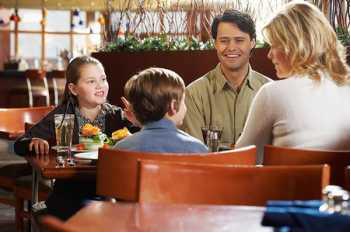
Restaurants, cafes and takeaway food outlets have a responsibility to serve food that is safe to eat. You can take basic steps to minimise the risk of food poisoning when eating out. Check that staff wear gloves and use separate tongs for handling raw and cooked foods, that the toilets are clean and the shop or restaurant is generally clean. Hot food should be served steaming hot.
Restaurants, cafes and takeaway food outlets have a responsibility to serve food that is safe to eat. However, there are some basic measures you can take that will minimise the risk of food poisoning when eating out.
When food left uneaten at a restaurant was taken home for the family pet. However, Food can be exposed to a number of hazards:
What type of food can make you sick?
Many different types of food can make you sick. Food that contains dangerous bacteria or viruses may not look, smell or taste any different from food that is safe. Food poisoning bacteria are either in the food to begin with or are transferred to the food during storage, cooking, preparing or serving.
High risk foods
Food poisoning bacteria can grow and multiply on some types of food more easily than others. These high risk foods include: - Meat
- Poultry such as chicken and turkey
- Dairy products
- Eggs
- Smallgoods such as salami and ham
- Seafood
- Cooked rice
- Cooked pasta
- Prepared salads such as coleslaw, pasta salads and rice salads
- Prepared fruit salads.
Choosing where to eat
When you decide to eat in a restaurant or to buy takeaway food, consider these questions: - Are staff wearing gloves and using separate tongs for handling raw and cooked foods?
- Are staff using clean cloths to wipe surfaces?
- Are raw and cooked foods well separated?
- Are the toilets clean?
- Is the shop or restaurant generally clean?
Hints for buying food
- Hot food should be served steaming hot. Avoid eating lukewarm food.
- Cold food should be displayed on ice or in a refrigerated cabinet and should feel cold when you eat it.
- Pre-made sandwiches and rolls that contain perishable ingredients, such as meat, fish, chicken, egg and cheese, should be stored in a refrigerated cabinet or kept at room temperature for less than four hours.
- Don’t buy ‘tired-looking’ food that looks like it has been sitting at room temperature for a long time.
- Minced meat, hamburgers, rolled or stuffed roasts and chicken must be cooked right through – there should be no pink meat.
- Steak, chops and whole roasts can be cooked to your preference.
- Takeaway food should be served in appropriate takeaway containers and at the appropriate temperature.
What to look for at buffets or self-service restaurants
- Food to be eaten hot is stored in hot food display cabinets or over burners.
- Cold food is displayed on ice or in special refrigerated cabinets.
- Each dish has its own serving utensils.
- Fresh food is replenished regularly.
- Foods are covered by some type of guard or cover.
- Plates and cutlery are clean and dry.
Taking food home
When you have takeaway food, either eat it within a few hours or take it home and put it in the fridge immediately – make sure that it is eaten within a couple of days. Throw out any high risk food that has been left in the temperature danger zone of between 5°C and 60°C for more than four hours.When food left uneaten at a restaurant was taken home for the family pet. However, Food can be exposed to a number of hazards:
- High risk food left in the temperature danger zone (between 5°C and 60°C) can have increased levels of food poisoning bacteria.
- Handling by the consumer can contaminate the food with food poisoning bacteria.
- Cooked and uncooked foods can be cross-contaminated with food poisoning bacteria.
Things to remember
- If the staff don’t look after themselves and their premises, they’re unlikely to look after your food very well.
- Hot food should be served hot and cold food should be served cold.
- If you are in any doubt about the safety of food – don’t eat it.
- If you have serious concerns with the way food is handled, stored or prepared by a restaurant, cafe or takeaway shop, contact the local council’s health department.









1 comments:
Cod Benzeri Oyunlar
Terraria Benzeri Oyunlar
Escape Benzeri Oyunlar
Ark Benzeri Oyunlar
Max Payne Benzeri Oyunlar
AE8RKY
Post a Comment
Thanks for visiting, please drop a message if you liked it or you have some suggestions. So that we can improve and provide you better services.